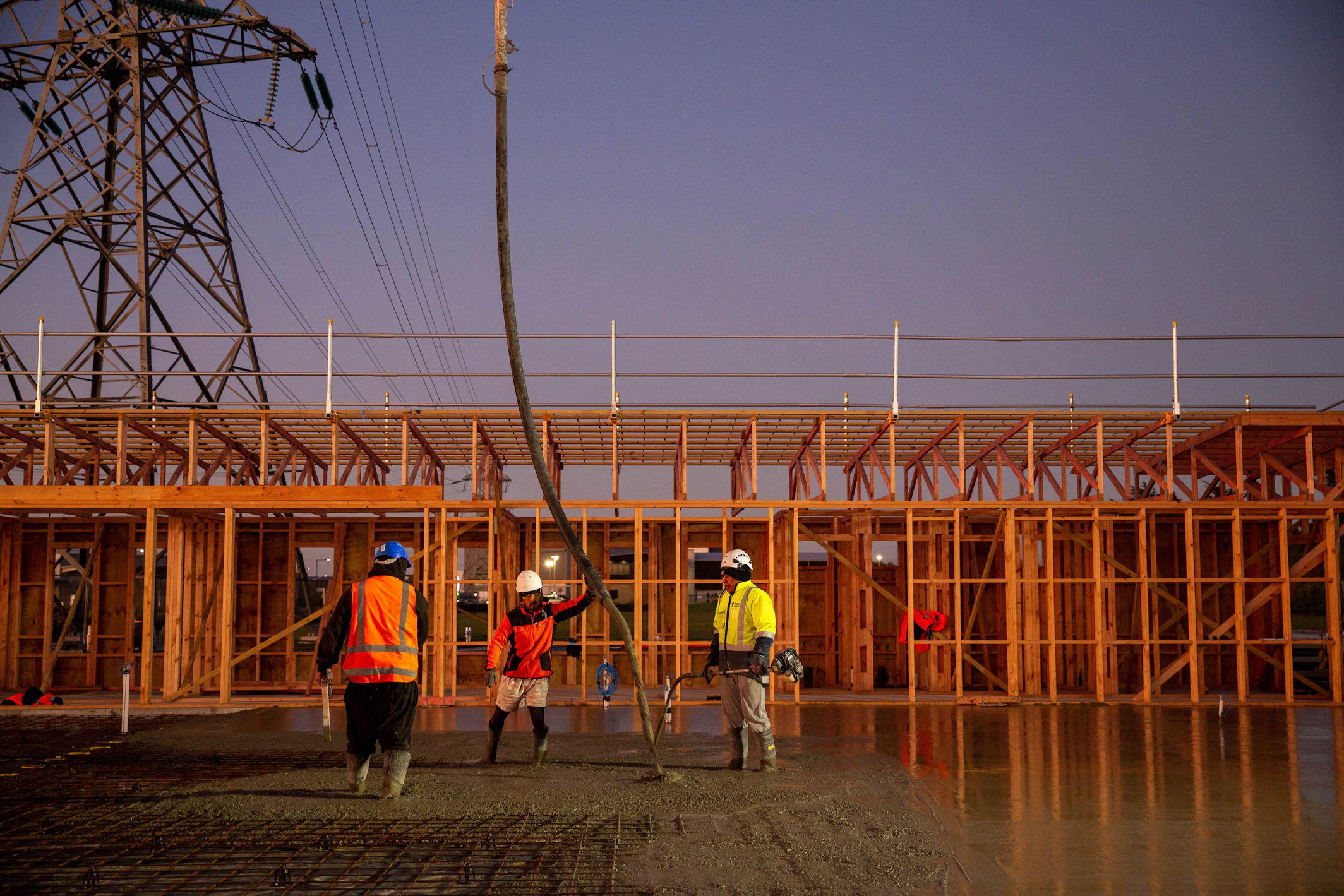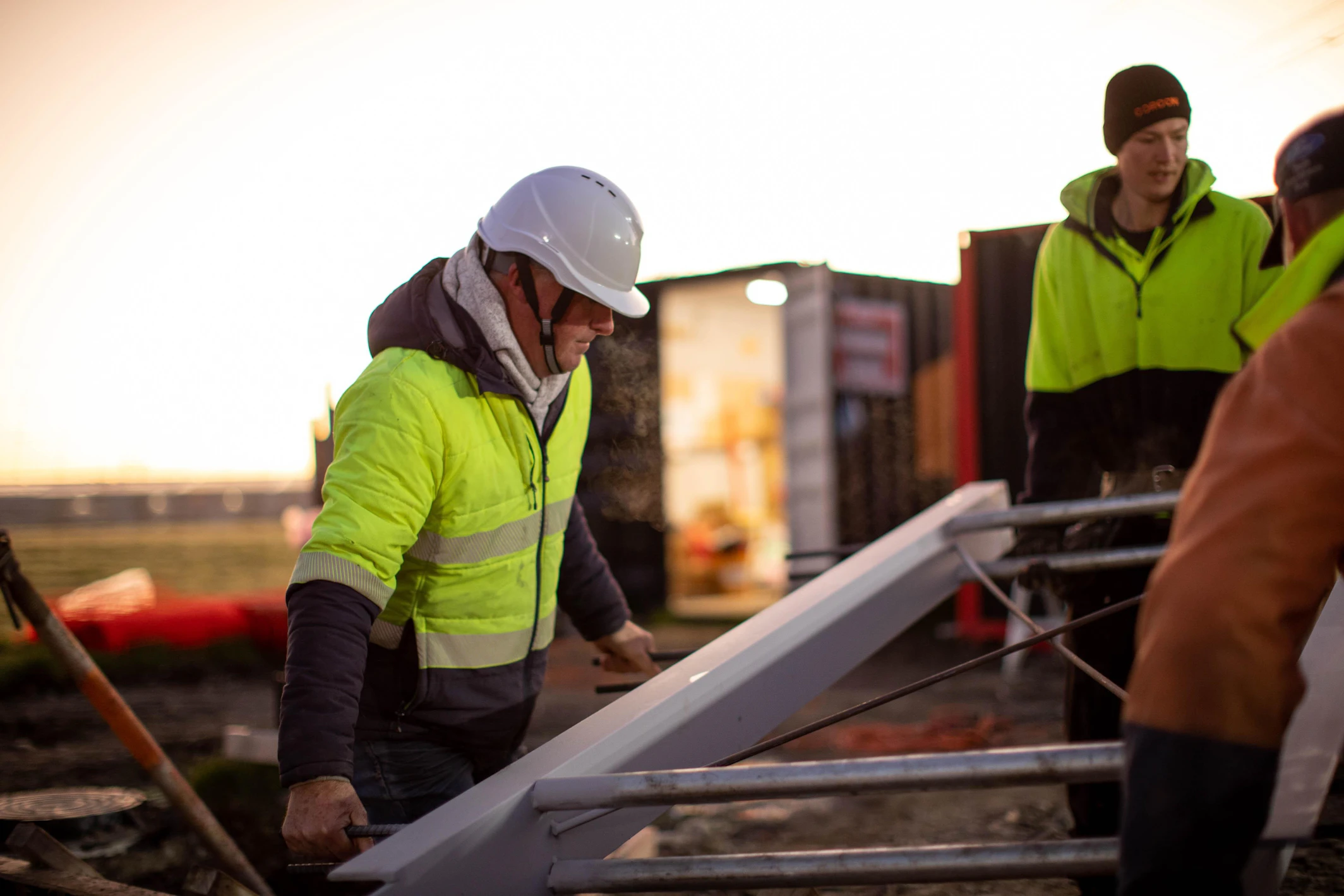Building a Green Building: Reducing Carbon Footprint

Learn effective methods for building a green building and actionable ways to make your commercial design-build project more eco-friendly.
Published:
08.05.2024
Kia whakatōmuri te haere whakamua
I walk backwards into the future with my eyes fixed on my past.
Shocking Statistics on New Zealand Environmental Degradation
As the construction industry evolves, sustainability has become a non-negotiable cornerstone of the industry worldwide. However, experts argue that some aspects of the New Zealand Building Code (NZBC) lag behind European and UK standards by approximately two decades. Criticism directed at the NZBC prompted updates in 2021, marking a step forward, but there is still a long way to go.
Why We Can't Afford to Ignore Environmental Impact
In New Zealand alone, the built environment accounts for a staggering 20% of the nation's carbon footprint, with industries like cement production ranking among the largest emitters worldwide. A sobering 2019 report by the New Zealand Green Building Council (NZGBC) highlights the urgent need to confront this ugly reality. It reveals that building construction activities could generate yearly pollution equivalent to one million cars on the road.
These alarming statistics have spurred the industry to embrace sustainable construction methods more widely, as evidenced by the year-on-year rise in buildings obtaining NZGBC certifications. Business owners and property developers seeking to minimise environmental harm can weave 'green infrastructure' throughout their commercial design-build projects. By seeking advice from the regional environmental protection authority and consulting with sustainable builders, businesses can mitigate their environmental footprint and enhance the ecological value of their projects.

Building a Green Building: Balancing Sustainability and Affordability for Long-Term Value
While prioritising sustainability may entail higher upfront costs, the long-term benefits far outweigh the initial investment. Green buildings not only enhance market value but also ensure regulatory compliance and foster positive reputations. Moreover, building a green building stimulates economic growth and promotes a balanced approach to meeting present needs without compromising the future.
There are avenues to save costs across a green project, such as teaming up with suppliers who prioritise sustainable sourcing. For example, Corcon's partnerships with reputable manufacturers allow us to provide budget-friendly choices and innovative commercial building solutions that strike a balance between financial prudence and environmental responsibility.
Sustainable Solutions: Reducing Environmental Impact
Corcon is dedicated to becoming more sustainable builders and helping combat environmental problems in the construction industry through innovative construction methods and sustainable building materials. Our approach emphasises sustainable architecture and green design principles to enhance your building's energy efficiency and minimise its environmental impact throughout its lifecycle.
Our commitment to building a green building begins long before construction starts. From strategic window placement that maximises natural light to high-performance insulation that optimises heat retention, we carefully tailor every design choice to reduce carbon emissions. We also integrate renewable energy sources like solar panels to further boost a building's self-sufficiency.
Central to building for sustainability and sustainable architecture is the conscious selection of materials sourced from local, renewable outlets and designed for recyclability. Thanks to advancements in technology, sustainable building materials are increasingly accessible in the construction industry.
Keep reading to discover some of the best sustainable building materials we recommend.

Guaranteed Green Building with Eco-Friendly Products
Steel: The Sustainable Superstar in Green Building Practices
Steel emerges as a star player in sustainable construction materials, offering unparalleled durability and recyclability. Unlike traditional materials, steel can be recycled indefinitely, minimising waste and reducing the environmental footprint of construction projects.
At the heart of our mission to become more sustainable builders lies innovative industrial steel designs.
Noteworthy Canterbury enterprises, including Environment Canterbury, Harvey Norman, and CityFitness, have all embraced steel-made buildings for its unparalleled sustainability advantages and outstanding structural performance. These buildings have been engineered to withstand New Zealand's harsh climate, guaranteeing long-term protection for your investment.

Insulated Structural Panels Completely Transforms Green Buildings
Our tailored commercial buildings use sustainable construction materials, such as insulated PIR foam core panels, which are manufactured here in Canterbury without ozone-depleting gases. Cantabrians, in particular, can enjoy cost savings from faster local delivery and minimal transport charges, ultimately creating quicker lead times and shorter construction timelines.
PIR panels are highly versatile for roof, wall, ceiling and cool room applications, outperforming similar products in thermal conductivity, cost-effectiveness, acoustic performance and durability. Robust, dual-sided panels double as premium exterior cladding and elegant interior lining, all while significantly improving heat retention and fire resistance. Ease of installation bolsters the list of benefits, making insulated PIR panels an intelligent choice for businesses wanting to balance eco-friendliness with aesthetics and performance.
New Zealand businesses favour insulated PIR panels when building a green building due to the variety of colours and profiles available to suit any design and the sleek finish that lends a minimalist aesthetic to commercial construction projects.
Contact us today to learn more about using insulated PIR foam panels for your commercial design-build.

Prefabricated Construction Leads the Way in Sustainability
The way a product is manufactured and assembled is crucial in determining its eco-friendliness as a building material. This is particularly evident in prefabricated construction, also known as modular construction. Prefabricated construction methods offer efficiency and cost-effectiveness while addressing environmental concerns in commercial design-build projects.
Prefabricated steel structures illustrate these benefits. By manufacturing steel components offsite in a controlled environment, fabricators can minimise waste and pollution while utilising recycling opportunities. Supervised factory processes also ensure consistent, superior quality standards.
Prefabricated steel structures have revolutionised how commercial builders erect commercial and industrial buildings, setting a new benchmark for speed, cost-efficiency, durability, and environmental responsibility. Upon delivery to the site, skilled commercial builders can swiftly assemble prefabricated steel structures without the need for welding. This efficient process reduces risk, saves on labour costs, and accelerates construction timelines.
In summary, prefabricated construction is a boon for future-thinking business owners who are building a green building and aim to reduce the carbon footprint of their commercial design-build projects.

Economic and Environmental Benefits of Building a Green Building
Embracing sustainable construction offers numerous benefits, including environmental preservation through reduced waste and energy efficiency, leading to long-term cost savings. It also prioritises the creation of healthier indoor environments and the conservation of valuable resources such as water and timber.
Some examples of building a green building include designing around the natural landscape, installing a rainwater harvesting system, utilising permeable pavements and re-propagating the landscape with native biodiversity.
Reviving or renewing nature post-construction is an instant contribution to a circular economy. Locals or kaimahi (staff) can participate in organised events like 'planting days', where groups labour to restore green spaces and biodiversity. For example, when we built the Environment Canterbury office and depot in Kainga, over fifty staff donned their gumboots to plant over two-hundred native plants around the premises. These community events fulfil corporate responsibility, earning a positive reputation and fostering social goodwill.

Building a Green Building: Real-Life Story of a Green Buildings Project
Environment Canterbury Kainga Purpose-Built Office Facility
Delve into the intricacies of the Environment Canterbury project, where the principles of building a green building and environmental consciousness are seamlessly integrated into the design and construction of a commercial haven. From sustainable materials to energy-efficient systems, witness how this project sets a benchmark for eco-friendly construction practices in the building sector.

Innovative greening features include
- Utilises innovative prefabricated steel kit, engineered with the patented DonoBeam portal system, resulting in a steel-saving box beam design that minimises waste and reduces carbon emissions by up to 40%.
- Roof and wall cladding features insulated PIR panels, effectively trapping warmth and repelling the Canterbury chill.
- Solar panels are employed to harness sunlight for sustainable energy generation.
- The HVAC system incorporates simultaneous heating and cooling and is equipped with a heat recovery system designed to conserve energy and enhance indoor air quality. Ventilation is optimised for high efficiency and low energy consumption.
- The surrounding landscape has been revitalised with plantings by ECan staff.
- Ply linings add a touch of modernity and warmth while offering sustainability benefits through low-wastage manufacturing, extended lifespan, and recyclability.
- Thermally broken aluminium window frames featuring Low E Plus glass enhance energy efficiency and comfort.
Sustainability is Redefining Construction
Building for sustainability is a fundamental shift in how we build and interact with our environment. From prefabricated construction to innovative materials and zero energy aspirations, the journey of building a green building is deeply rewarding and one of collective responsibility and innovation.
At Corcon, we recognise the urgent need for bold action to combat pollution and environmental degradation within the commercial building sector. Let's build green together. Contact us today to start your journey towards eco-friendly and innovative commercial design-build solutions.
Ready to convert your building ideas into reality? Get in touch with one of our experts today and plan your next project
Phone03 341 7013

